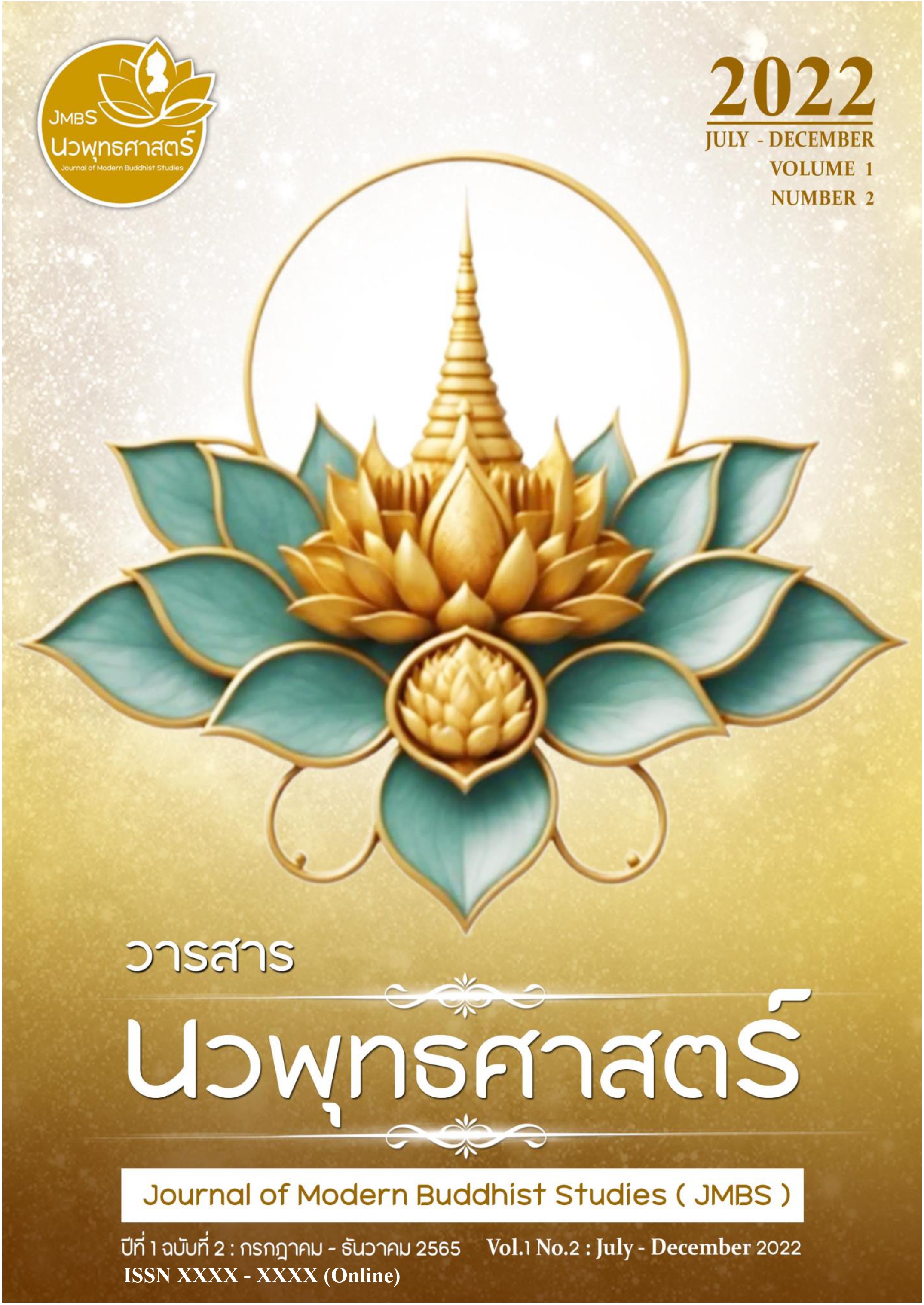AN ANALYTICAL STUDY OF IDENTITY IN THAI SONGDAM
Keywords:
Innovations, Media Development, Dvaravati EraAbstract
This research aimed to study the way of life of the Thai Song Dam community in Phetchaburi Province and analyze their way of life through the lens of Buddhist principles. The research employed a qualitative approach, utilizing three methods of analysis: (1) descriptive analysis, (2) interpretative analysis, and (3) synthesis. The study focused on examining and analyzing the identity of the Thai Song Dam people by employing content analysis techniques in conjunction with contextual examination to present their unique identity. The findings revealed that many rituals performed by Thai Song Dam Buddhists incorporate beliefs derived from Brahmanism, Hinduism, and Buddhism. Participants in these rituals often believe that such practices contribute to success. Ancient Buddhist beliefs suggest that abnormalities not directly caused by human actions are attributed to spirits or supernatural forces. Such rituals and beliefs provide psychological security and reinforce confidence in daily life. Furthermore, the religious systems observed in hunting societies serve as the most fundamental form of religion, with different tribes identifying themselves with specific animals or plants as their group symbols. Key Buddhist principles found in archaeological evidence along the propagation routes of Buddhism among the Thai Song Dam include the "Dharma Wheel" (Dharmachakra), symbolizing Buddhism in the past, and the "Six-Colored Flag" (Chabbanna Ransi), an international Buddhist emblem. The term "Chabbanna Ransi" translates to "six-colored radiance," referring to the six-colored aura emanating from the body of the Buddha. Additionally, the Thai Song Dam way of life is closely tied to beliefs in spirits and souls, which are viewed as protective deities. These beliefs align with contemporary practices and consist of three main aspects: 1) Faith in the effects of generosity, offerings, and worship, as well as the karmic consequences of good and bad deeds, reflecting a belief in karmic law and its outcomes. 2) Belief in the virtue of parents, the existence of this life and the afterlife, and the rebirth of deceased beings, demonstrating faith in Buddhist truths and teachings. 3) Confidence in monks and ascetics who follow righteous practices and use their profound wisdom to illuminate the truth of both this world and the next, teaching others to comprehend the truth accordingly.
References
กานต์ทิตา สีหมากสุก (2558). “วิเคราะห์ปัจจัยการดำรงอยู่และการเปลี่ยนแปลงความเชื่อในพิธีกรรมของไทยทรงดำ : กรณีศึกษาเขตตำบลหนองปรง อำเภอเขาย้อย จังหวัดเพชรบุรี”. วิทยานิพนธ์การศึกษาตามปรัชญาดุษฎีบัณฑิต. บัณฑิตวิทยาลัย: มหาวิทยาลัยบูรพา.
ทวี ธีระวงศ์เสรี (2517). สถานภาพทางกฎหมายของชาวจีนในประเทศไทย. กรุงเทพมหานคร: โอเดียนสโตร์.
ธรรมะไทย (2565). การเผยแผ่พระพุทธศาสนาเข้าสู่ลาว. สืบค้นข้อมูลจาก http://www.dham mathai.org/ thailand/missionary/laos.php.
บุญนาค วิเชียรรัตนพงษ์ (2563). “การศึกษาอัตลักษณ์ของชุมชนไทยทรงดำตามหลักพระพุทธศาสนาในตำบลบ้านดอน อำเภออู่ทอง จังหวัดสุพรรณบุรี”. วิทยานิพนธ์พุทธศาสตรมหาบัณฑิต. บัณฑิตวิทยาลัย: มหาวิทยาลัยจุฬาลงกรณ์ราชวิทยาลัย.
พิเชฐ สายพันธ์ (2561). พลวัตในจักรวาลทัศน์และโลกทัศน์ของลาวโซ่ง/ไทดำจากพิธีกรรมความตาย. กรุงเทพมหานคร: ศูนย์มานุษยวิทยาสิรินธร.
มูลนิธิชนเผ่าพื้นเมืองเพื่อการศึกษาและสิ่งแวดล้อม (2565). ไทยทรงดำ: วัฒนธรรมด้านภาษาท้องถิ่น. สืบค้นข้อมูลจาก https://ipf.or.th/?p=237
เรือนชูอร (2565). การเผยแผ่พระพุทธศาสนา. สืบค้นข้อมูลจาก https://nooornchurue.word press.com/2013/09/11/
สมทรง บุรุษพัฒน์ (2540). สารานุกรมกลุ่มชาติพันธุ์: ไทโซ่. นครปฐม: สํานักงานวิจัยภาษาและวัฒนธรรมเอเชียอาคเนย์ สถาบันวิจัยและวัฒนธรรมเพื่อพัฒนาชนบท มหาวิทยาลัยมหิดล.
สำนักงานวัฒนธรรมจังหวัดสมุทรสาคร (มปป.). สมุทรสาคร สายน้ำวัฒนธรรมแห่งชาติพันธุ์. บรรณาธิการ.
สุมน อมรวิวัฒน์ (2538). ความคิดและภูมิปัญญาไทยด้านการศึกษา. กรุงเทพมหานคร: โรงพิมพ์จุฬาลงกรณ์มหาวิทยาลัย.
สุมิตร ปิติพัฒน์ (2540). ลาวโซ่ง: พลวัตของระบบวัฒนธรรมในรอบสองศตวรรษ. กรุงเทพมหานคร: คณะสังคมวิทยาและมานุษยวิทยา มหาวิทยาลัยธรรมศาสตร์.
อภิญวัฒน์ โพธิ์สาน (2552). สารัตถะคติความเชื่อและพิธีกรรมลาวโซ่ง. มหาสารคาม: หจก.อภิชาติการพิมพ์.

Additional Files
Published
How to Cite
Issue
Section
License

This work is licensed under a Creative Commons Attribution-NonCommercial-NoDerivatives 4.0 International License.





